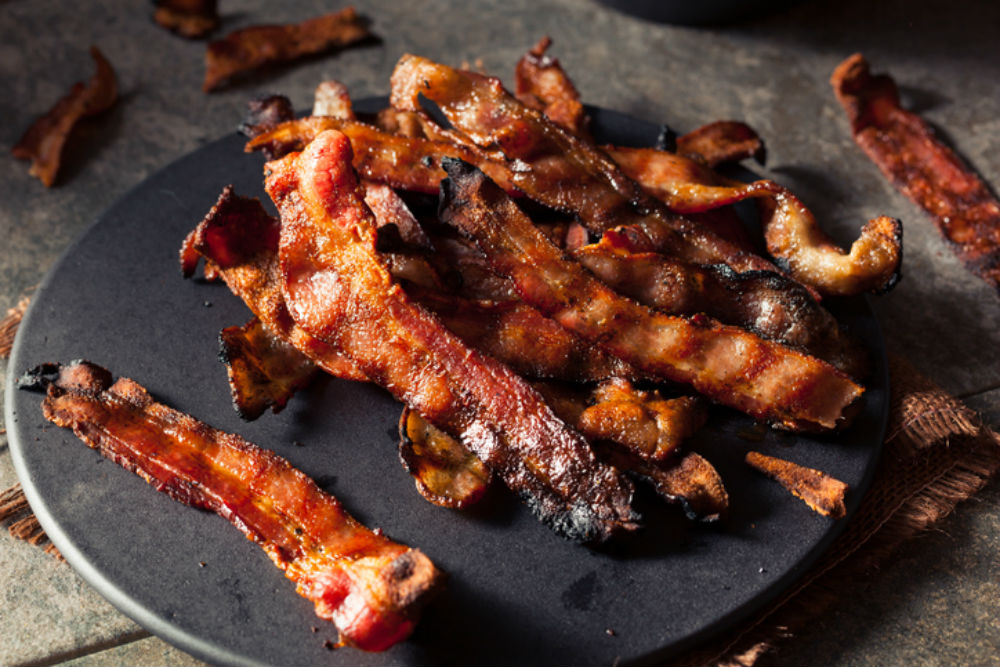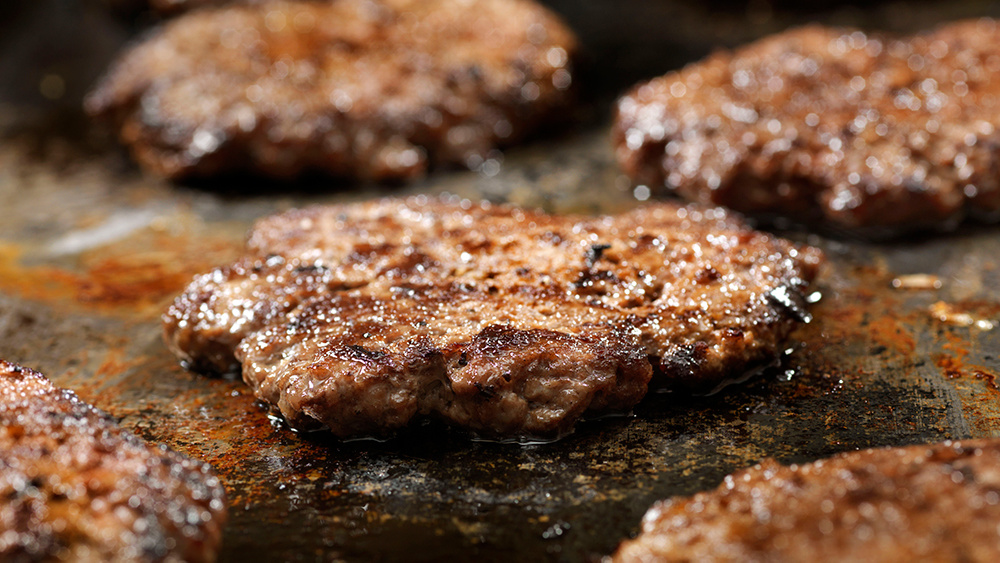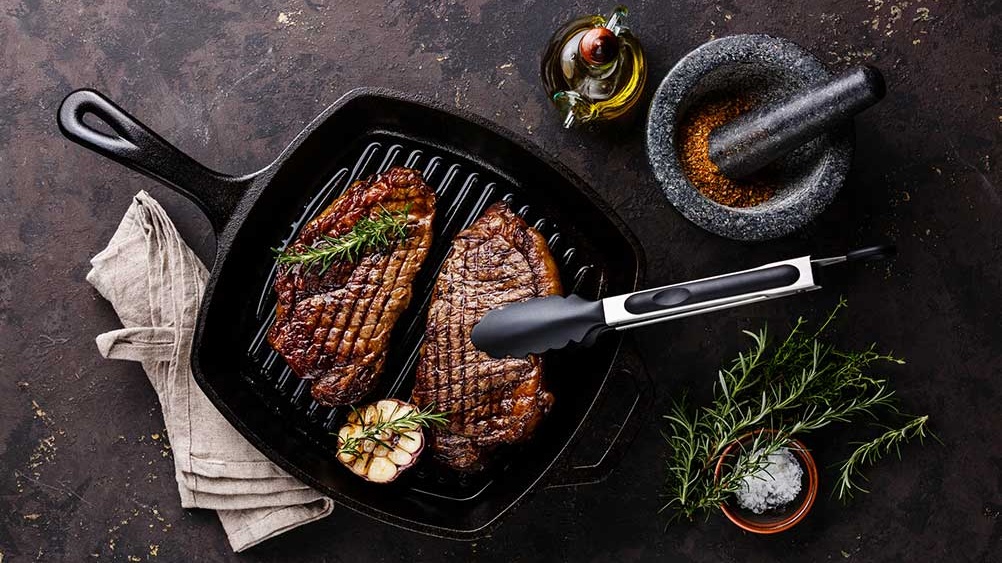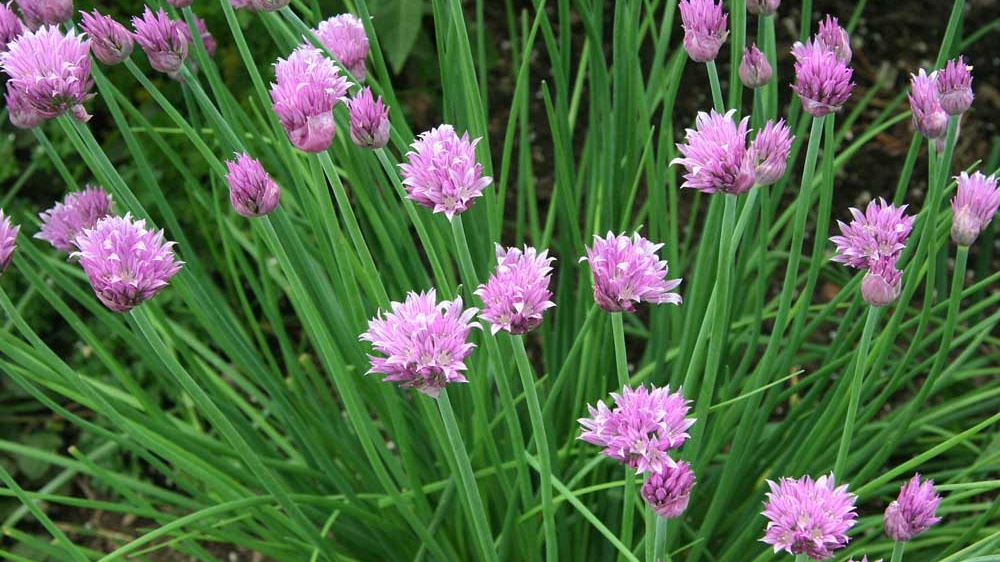
 Add to favorites
Add to favorites
If you’re trying to eat healthy, (aka clean eating) you’re likely to have an opinion about bacon. I have a very dear friend from Iowa. The land of pork.
He’s the kind of guy who gets his pork products directly from the farm. He was raised on a farm so he still has lots of friends in the farming business and he chooses his purveyors carefully.
He’s really picky about his bacon. He wants his with no nitrates, no nitrites and he wants it uncured. Those things all sort of go together as we are about to find out.
For this column I am going to do something I don’t usually do. I am going to fully source an article I found written by the fine folks at Prevention magazine. I am going to interrupt their findings with comments of my own, but I think they did the best job of laying out the controversy surrounding bacon. They also do a great job of defining the elements involved; namely nitrates, nitrites and curing.
So….
Are nitrates and nitrites good or bad?
To answer that question, you first need to understand how they’re different. Nitrates and nitrites are both naturally occurring chemical compounds found in soil, water, plants, and even our own bodies. One of the most common forms is a natural salt called sodium nitrate, which is exceptionally good at preserving meats and has been used for this purpose for generations. But, near the turn of the 20th century, meat producers made an important discovery: When sodium nitrate interacts with bacteria in meat, it converts to sodium nitrite. Today, just about every manufacturer skips that bacterial conversion and just adds synthetic sodium nitrite directly to cured meats. It’s the “synthetic” part that makes the hairs on the back of my neck stand at attention.
In some ways, that’s a good thing: Nitrites keep the fat in meat from going rancid while inhibiting the growth of dangerous bacteria like listeria and botulism. But in the 1970s, researchers discovered that when meat containing sodium nitrite is heated above 266°F, it creates nitrosamines, or compounds that are carcinogenic to animals. That triggered the USDA to limit the amount of nitrites that may be added to cured meats and to require that all products containing nitrites include vitamin C, which prevents the formation of nitrosamines. Still, in 2010, WHO (World Health Organization) listed ingested nitrates and nitrites as probable human carcinogens.
But here’s the shocker: For all the fuss that’s been made about nitrates, nitrites, and nitrosamines, cured meats only account for a minuscule 6% of our dietary nitrate intake. Around 80% of our nitrate consumption comes from veggies, according to the CDC (about 21% is accounted for by drinking water). Celery, leafy greens, beets, parsley, leeks, endive, cabbage, and fennel are the most potent sources, but you’ll get some nitrates from almost any plant you eat. You’ll notice that these all grow in the ground and most of them are fairly leafy.
Why are plants so high in nitrates? They pick them up from soil, nitrogen-based fertilizer (another reason to do your best to eat organic), water, and nitrogen in the atmosphere. When we eat nitrates in plants, bacteria in our mouth convert them to—you guessed it—nitrites. Nitrites are then absorbed and stored in our cells until they’re turned into nitric oxide, a compound that’s proven to relax blood vessels and increase blood flow. I’ve seen this reference more than once, from different types of sources, so that gives me hope.
Nitrites are so essential, in fact, that our bodies even create it on their own. “For every kilogram of body weight you carry, your body naturally produces about a milligram of nitrite,” says Jeff Sindelar, PhD, associate professor at University of Wisconsin-Madison department of animal sciences.
The bottom line? Some researchers have found associations (but not direct causal links) between high nitrite consumption and certain cancer risks. “There is some epidemiological evidence suggesting that, when added to foods, these compounds may be associated with esophageal or stomach cancer,” says Johanna Congleton, PhD, EWG senior scientist. “Those studies are the ones that give us cause for concern.”
So often these studies come up with the cautionary “more work needs to be done”, yet they go ahead and publish anyway. I guess they just want to be first to get published. But others have called for the re-classification of dietary nitrates as a nutrient, not a potential carcinogen. “Worrying about consuming these products at high enough levels where they might be considered toxic is really an insignificant concern,” says Sindelar. (That’s not a carte blanche to gnaw on salami logs every day. There is well-documented consensus that high consumption of processed meats can up your risk for heart disease, cancers, and death—no matter what preservatives have been added to them.)
There’s no simple answer. Whether nitrates and nitrites are a boon or a blight may depend heavily on what foods they come from and the particular human ingesting them. One thing is for sure: Nitrates’ and nitrites’ reputation as avoid-at-all-cost, cancer-causing nasties does not appear to be entirely accurate.
So leaving Prevention magazine’s input, what is curing? And what does it have to do with bacon?
Cured vs. Uncured
Cured bacon is preserved with a commercial preparation of salt and sodium nitrites. Nitrites are additives that are responsible for giving bacon its pink color, among many other things.
There are two methods of curing — pumping and dry-curing. The concentration of nitrites cannot exceed 200 parts per million (ppm) in dry-cured bacon and 120 ppm in pumped bacon, according to the U.S. Food Safety and Inspection Service (FSIS).
“Uncured” bacon is bacon that hasn’t been cured with sodium nitrites. Usually, it’s cured with a form of celery, which contains natural nitrites, and plain old sea salt, as well as other flavorings like parsley and beet extracts. Uncured bacon has to be labeled: “Uncured bacon. No nitrates or nitrites added.”
So, here are my takeaway points:
- Eat organic if you can, to limit the amount of nitrogen-based fertilizer you end up consuming.
- Avoid buying a lot of “lunch meat.” I used to buy the stuff shrink-wrapped and hanging from hooks. No more.
- When I do buy any kind of meat from the deli I try to buy items that have been roasted in house. They are fresher.
- And I try not to make too many of my meals from this kind of food. I know folks still take a sandwich to work every day in their lunch box. I eat that stuff maybe once a month or even once a quarter.
- I do buy uncured bacon that is nitrate and nitrite-free. Reason is when it’s cured they use sea salt and celery salt to preserve it. That way I know I am not getting excessive amounts of processed salt in my body. I’d rather eat sea salt every time.
Enjoy your bacon! Give me mine, crispy!
Cheers,


Nothing found.
Smash Burgers
ZS-5 Ingredients or Less,ZReboot,Featured Posts,ZSpecialties,Recipes
Smash burgers are all the rage. Step into a brew pub and you’ll likely find a smash burger on the food menu. These are NOT the huge, 8oz burgers we’ve been fed in the past. These are a thinner burger…
Nothing found.
Cooking with Cast Iron
Like seared meats and veggies? You'll love cast iron. Here are some of the benefits of cooking with cast iron and a few hints for use and maintenance.
Chives
My chives were the first thing to come up in my herb garden every year. As soon as the snow melted I could see their little heads popping up through the soil. By the time it was warm enough to…





